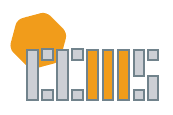Abstract / Synopsis
The distinction between the discrete and the continuous lies at the heart of mathematics. Discrete mathematics (arithmetic, algebra, combinatorics, graph theory, cryptography, logic) has a set of concepts, techniques, and application areas largely distinct from continuous mathematics (traditional geometry, calculus, most of functional analysis, differential equations, topology). The interaction between the two – for example in computer models of continuous systems such as fluid flow – is a central issue in the applicable mathematics of the last hundred years. This article explains the distinction and why it has proved to be one of the great organizing themes of mathematics.
DOI
10.5642/jhummath.201702.18
Recommended Citation
James Franklin, "Discrete and Continuous: A Fundamental Dichotomy in Mathematics," Journal of Humanistic Mathematics, Volume 7 Issue 2 (July 2017), pages 355-378. DOI: 10.5642/jhummath.201702.18. Available at: https://scholarship.claremont.edu/jhm/vol7/iss2/18
